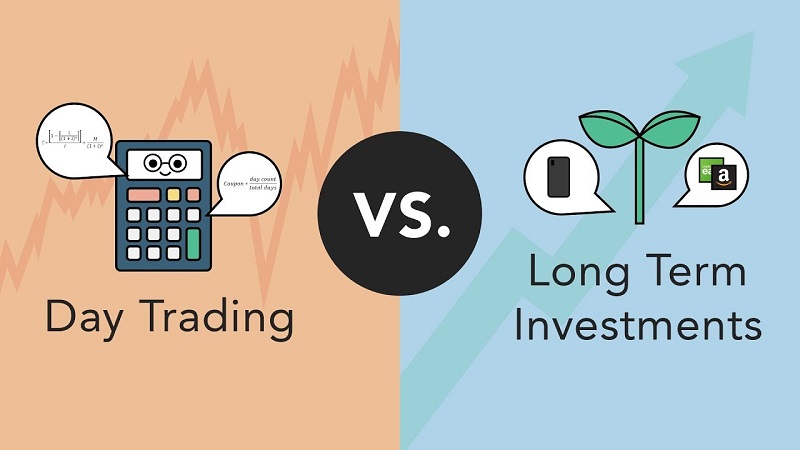Day Trading vs. Swing Trading: Which Approach is Right for You?
The world of trading offers various approaches to capitalize on the financial markets. Among the most popular methods are day trading and swing trading, each with its own unique characteristics and benefits. Day trading involves the rapid buying and selling of financial instruments within the same trading day, while swing trading focuses on holding positions for a few days or even weeks. Both strategies can be lucrative if executed correctly, but they cater to different personalities, risk appetites, and time commitments. In this comprehensive guide, we will delve into the key differences between day trading and swing trading, explore the best practices and strategies for each approach, and help you determine which one suits you best.
Day Trading Strategies and Tips
- Understanding Day Trading Day trading is an active trading style where traders enter and exit positions within the same trading day. The goal is to profit from short-term price movements, leveraging volatility and intraday trends. Day traders often use leverage to magnify potential gains, but this comes with increased risk.
- Building a Solid Foundation Before diving into day trading, it’s essential to educate yourself about the financial markets, trading strategies, and risk management. Take time to learn technical analysis, chart patterns, and candlestick formations. Understanding market indicators and interpreting price action is crucial for making informed decisions.
- Set Clear Goals and Limits Establishing clear goals and risk limits is paramount in day trading. Determine how much capital you are willing to risk on a single trade and set profit targets. Day traders often use stop-loss orders to minimize potential losses and take-profit orders to secure profits.
- Start with a Demo Account For beginners, practicing with a demo account can be immensely beneficial. A demo account allows you to trade with virtual money and gain real-time market experience without risking your capital. Use this opportunity to refine your strategies and build confidence before trading with real funds.
- Focus on Liquid Assets Day traders typically focus on highly liquid assets with significant trading volumes. Liquid assets have tighter bid-ask spreads, reducing the impact of transaction costs on profits. Popular day trading assets include stocks, forex pairs, and cryptocurrencies.
- Embrace Scalping Techniques Scalping is a specialized day trading technique where traders make multiple quick trades to profit from small price movements. Scalpers aim to take advantage of bid-ask spreads and order flow imbalances. While profitable, scalping requires discipline, quick decision-making, and a reliable internet connection.
- Use Technical Indicators Wisely Technical indicators can be valuable tools in day trading, but avoid overloading your charts with too many indicators. Commonly used indicators include Moving Averages, Relative Strength Index (RSI), and Bollinger Bands. Keep in mind that indicators are not foolproof and should be used in conjunction with other analysis methods.
- Stay Informed and Adaptable The financial markets are dynamic, and conditions can change rapidly. Stay informed about economic events, company news, and market sentiment that may influence your trades. Being adaptable and open to adjusting your strategies based on market conditions is essential for long-term success in day trading.
Swing Trading vs. Long-Term Investing
- Understanding Swing Trading Swing trading is a style that aims to capture short to medium-term price movements. Unlike day trading, swing traders hold positions for a few days or weeks, allowing them to ride trends and avoid the pressure of making split-second decisions.
- Identifying Potential Swing Trades Swing traders look for assets with clear trends and well-defined support and resistance levels. Technical analysis plays a crucial role in identifying potential entry and exit points. Additionally, paying attention to fundamental factors can help confirm the validity of a swing trade.
- Patience and Discipline Swing trading requires patience and discipline, as positions are held for more extended periods compared to day trading. Avoid the temptation to exit a trade prematurely due to minor price fluctuations, and stick to your trading plan.
- Risk Management in Swing Trading As with any trading strategy, risk management is paramount in swing trading. Determine the maximum percentage of your capital you are willing to risk on a single trade, and use stop-loss orders to limit potential losses. Additionally, avoid over-leveraging positions, as swings in price can result in significant account fluctuations.
- Long-Term Investing While swing trading involves holding positions for several days or weeks, long-term investing takes a more extended approach, spanning months to years. Long-term investors focus on the fundamentals of a company, looking for strong financials, competitive advantages, and growth potential.
- Benefits of Long-Term Investing Long-term investing offers several benefits, including reduced stress and less frequent trading activity. By holding positions for more extended periods, investors can benefit from compounding returns and potentially ride out short-term market volatility.
- Diversification and Asset Allocation For long-term investors, diversification is a key strategy to manage risk. Spreading investments across different asset classes and industries can help mitigate the impact of any single investment’s poor performance.
- Understanding Your Risk Tolerance Whether you choose swing trading or long-term investing, understanding your risk tolerance is crucial. Assessing how much risk you are comfortable with will help you align your trading or investment style with your personality and financial goals.
Conclusion
Day trading and swing trading are two popular approaches to navigating the financial markets. Day trading involves rapid buying and selling within the same trading day, requiring quick decision-making and discipline. Swing trading, on the other hand, focuses on capturing short to medium-term price movements, allowing traders to ride trends and avoid the pressure of constant monitoring. Both approaches have their pros and cons, and the right choice depends on your individual preferences, risk appetite, and time commitment. Whether you prefer the adrenaline rush of day trading or the patience of swing trading and long-term investing, remember that success in any approach requires continuous learning, disciplined risk management, and the ability to adapt to changing market conditions.









